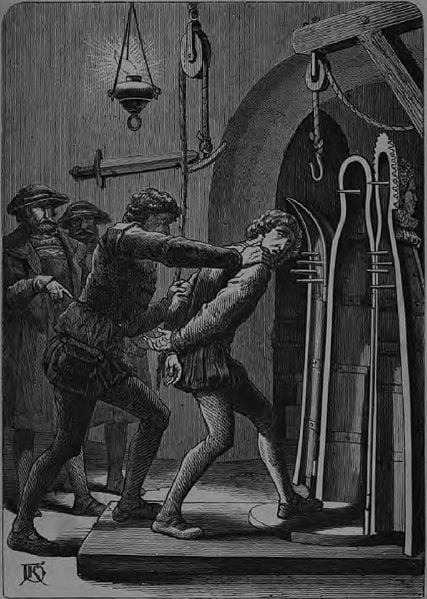Skill, Intimidate, (Charisma)
This material is Open Game Content, and is licensed for public use under the terms of the Open Game License v1.0a.

Check
You can change another’s behavior with a successful check. Your Intimidate check is opposed by the target’s modified level check (1d20 + character level or Hit Dice + target’s Wisdom bonus [if any] + target’s modifiers on saves against fear). If you beat your target’s check result, you may treat the target as friendly, but only for the purpose of actions taken while it remains intimidated. (That is, the target retains its normal attitude, but will chat, advise, offer limited help, or advocate on your behalf while intimidated. See the Diplomacy skill, above, for additional details.) The effect lasts as long as the target remains in your presence, and for 1d6×10 minutes afterward. After this time, the target’s default attitude toward you shifts to unfriendly (or, if normally unfriendly, to hostile).
If you fail the check by 5 or more, the target provides you with incorrect or useless information, or otherwise frustrates your efforts.
Demoralize Opponent
You can also use Intimidate to weaken an opponent’s resolve in combat. To do so, make an Intimidate check opposed by the target’s modified level check (see above). If you win, the target becomes shaken for 1 round. A shaken character takes a -2 penalty on attack rolls, ability checks, and saving throws. You can intimidate only an opponent that you threaten in melee combat and that can see you.
Action
Varies. Changing another’s behavior requires 1 minute of interaction. Intimidating an opponent in combat is a standard action.
Try Again
Optional, but not recommended because retries usually do not work. Even if the initial check succeeds, the other character can be intimidated only so far, and a retry doesn’t help. If the initial check fails, the other character has probably become more firmly resolved to resist the intimidator, and a retry is futile.
Special
You gain a +4 bonus on your Intimidate check for every size category that you are larger than your target. Conversely, you take a -4 penalty on your Intimidate check for every size category that you are smaller than your target.
A character immune to fear can’t be intimidated, nor can non-intelligent creatures.
If you have the Persuasive feat, you get a +2 bonus on Intimidate checks.
Synergy
If you have 5 or more ranks in Bluff, you get a +2 bonus on Intimidate checks.
Torture

Crime and Punishment
Author Keith Baker
Series Campaign Style
Publisher Atlas Games
Publish date 2003
The willful torture of another living creature is a heinous act. But that hasn’t stopped it from being performed throughout history, to extract information or enforce cooperation. Evil-aligned governments may use torture as a way to motivate suspects to confess. You may not stoop so low as to engage in torture, but should you or your friends fall into evil hands, it’s important to understand the horrors that may lie in wait. It’s possible to torture someone without using any skill whatsoever. Anyone can, say, start to cut off your toes or pull out your teeth. But too much pain will simply put a victim into shock, or cause him to start babbling whatever he believes his torturer wants to hear. The true art of the torturer is to keep the victim alive and conscious, and to motivate him to speak clearly and honestly – to tell the truth because he is more afraid of what will happen if he is caught in a lie than he is of what has already occurred. There are two basic types of torture: psychological and physical. Psychological torture is based on Intimidation, while physical torture ‘ strangely enough ‘ uses Heal.
Compared to physical torture, psychological torture can take a tremendous variety of forms. It might involve the threat of physical torment, making it sound even worse than it actually is. It could be based on threats to loved ones or to the victim’s reputation. Or it could simply involve actions intended to drive the victim to the point of madness – without actually pushing her over the edge. The advantage of psychological torture is that it can break people who possess tremendous fortitude. A barbarian may be far too tough to fall victim to a set of thumbscrews, but a skilled inquisitor can still make her cry like a baby.
Check: After 30 minutes of working on the victim, make an Intimidation check opposed by her Will save. The consequences of success or failure are the same as physical torture, including the victim’s ability to lie if she saves successfully.
Retry: You must wait for at least an hour before retrying a failed roll. You cannot take 10 or 20 on the check.
Special: You can improve the odds of psychological torture by spending time to prime the subject. For every 30 minutes you spend speaking with your victim (or performing other actions designed to unnerve her), you may make a Sense Motive roll opposed by your target’s Will save. If you are successful, you get a +1 circumstance bonus to your Intimidation check. You can instead choose to keep prying at the victim’s mind to increase this bonus; each subsequent successful Sense Motive check will add one to the bonus, to a maximum value of +4. However, if you leave the subject alone and unattended for more than an hour, the bonus is lost.
Like Gather Information, psychological torture should involve roleplaying; the victim or inquisitor should get bonuses to their rolls based on how they handle the situation.

 Buy me a coffee
Buy me a coffee